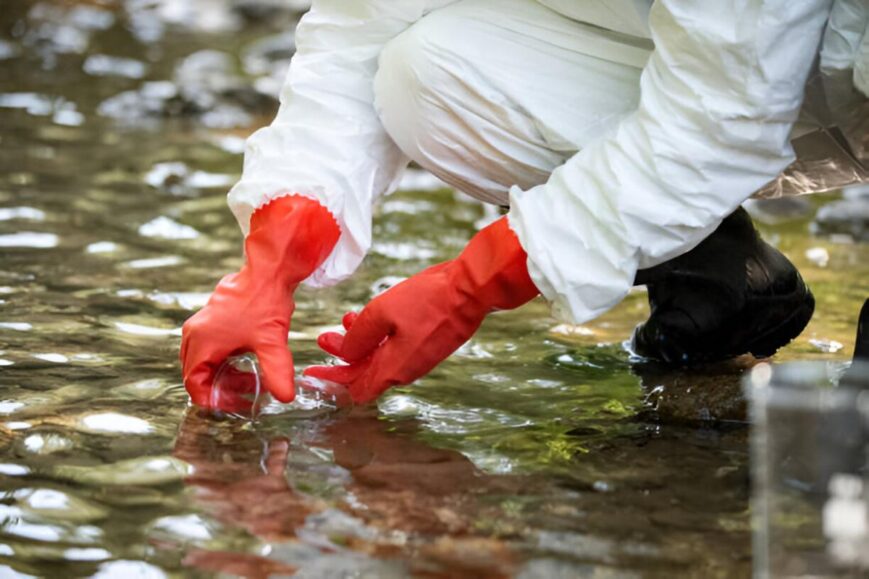Water is one of the most essential elements for life, and having access to clean and safe drinking water is critical for maintaining good health. However, not all water is as pure as it appears. Even in countries with regulated water systems, contaminants can find their way into the water supply, potentially posing risks to health. From chemicals to microorganisms, various pollutants can affect the safety and quality of the water that flows into your home.
In this article, we will explore some of the most common water pollutants, how they enter the water supply, and the potential health effects associated with them. If you’re concerned about the quality of your drinking water, you might consider installing water filters Sydney, which can help remove harmful contaminants and improve the overall safety and taste of your water.
1. Heavy Metals
Heavy metals, such as lead, mercury, arsenic, and cadmium, are some of the most dangerous water contaminants. These metals can enter the water supply through natural deposits, industrial runoff, or the corrosion of pipes.
- Lead: Lead is one of the most well-known heavy metal contaminants, and it typically enters drinking water through lead pipes, solder, or fixtures in older homes. Lead exposure is particularly harmful to children and pregnant women, as it can impair brain development, lower IQ, and cause behavioural problems. In adults, long-term exposure can lead to kidney damage, high blood pressure, and neurological issues. Unfortunately, lead is tasteless, colourless, and odourless, making it difficult to detect without testing.
- Mercury: Mercury contamination can result from industrial pollution or improper disposal of mercury-containing products. Exposure to mercury, even in small amounts, can cause severe damage to the nervous system, kidneys, and immune system. Pregnant women and young children are particularly vulnerable, as mercury can negatively affect fetal development.
- Arsenic: Arsenic is naturally present in the Earth’s crust, but it can also enter water supplies through agricultural and industrial processes. Long-term exposure to arsenic in drinking water can lead to skin lesions, cardiovascular disease, and an increased risk of cancer.
2. Chlorine and Chloramines
Chlorine and chloramines are commonly used by water treatment facilities to disinfect public water supplies. While they play a vital role in killing bacteria and viruses, they can have adverse effects on health when consumed in large quantities or over extended periods.
- Chlorine: When chlorine reacts with organic matter in water, it can form harmful byproducts known as trihalomethanes (THMs). Some studies suggest that long-term exposure to THMs can increase the risk of cancer and have negative effects on the liver, kidneys, and central nervous system. Additionally, drinking water with high levels of chlorine may lead to unpleasant tastes and odours, as well as skin and eye irritation.
- Chloramines: Chloramines are a combination of chlorine and ammonia used to disinfect water. While they are less likely to produce THMs than chlorine, they can still cause respiratory and skin irritation, especially in individuals with asthma or other respiratory conditions. Some people may also be sensitive to the taste and smell of chloramine-treated water.
3. Pesticides and Herbicides
Pesticides and herbicides are chemicals used in agriculture to control pests and weeds. These chemicals can enter water supplies through runoff from farms, gardens, and even golf courses. The health risks associated with these contaminants depend on the specific chemicals used, but exposure to certain pesticides and herbicides can have serious consequences.
- Atrazine: Atrazine is one of the most commonly used herbicides in agriculture, particularly for corn and sugarcane crops. It has been found in water supplies across Australia and other countries. Studies have linked atrazine exposure to hormone disruption, reproductive issues, and an increased risk of cancer.
- Glyphosate: Glyphosate, the active ingredient in many weed killers, has also been found in water supplies. There is ongoing debate about the potential health effects of glyphosate, but some studies suggest a link between long-term exposure and increased risk of cancer, particularly non-Hodgkin’s lymphoma.
4. Microorganisms
While chemical contaminants are a significant concern, biological contaminants, such as bacteria, viruses, and parasites, can also pose serious health risks. These microorganisms can enter water supplies through human and animal waste, agricultural runoff, and improper sewage treatment.
- E. coli: E. coli is a type of bacteria commonly found in the intestines of humans and animals. While most strains are harmless, certain strains, like E. coli O157
, can cause severe gastrointestinal illness, including diarrhoea, abdominal cramps, and vomiting. Drinking water contaminated with E. coli can lead to outbreaks of waterborne diseases, particularly in communities with compromised water treatment systems.
- Giardia: Giardia is a parasite that causes a condition known as giardiasis, which results in diarrhoea, abdominal discomfort, and dehydration. Giardia is often found in water sources that have been contaminated by animal or human faeces. It is resistant to chlorine, making it difficult to treat in standard water treatment facilities.
- Cryptosporidium: Another waterborne parasite, Cryptosporidium, can cause cryptosporidiosis, a gastrointestinal illness with symptoms similar to giardiasis. Like Giardia, Cryptosporidium is resistant to chlorine, and it can survive in water systems for long periods.
5. Pharmaceuticals and Hormones
Pharmaceuticals and hormones are emerging contaminants in water supplies that have raised concerns in recent years. These substances can enter water through improper disposal of medications, human waste, and agricultural runoff from livestock treated with antibiotics or hormones.
- Antibiotics: The presence of antibiotics in drinking water, even in trace amounts, can contribute to the development of antibiotic-resistant bacteria. This is a growing public health concern, as it makes it more difficult to treat infections that are resistant to commonly used antibiotics.
- Hormones: Hormones, such as oestrogen, can enter the water supply through wastewater and agricultural runoff. Long-term exposure to hormones in drinking water may affect human development and reproductive health. Some studies have also suggested that hormone exposure can contribute to hormonal imbalances and the early onset of puberty in children.
How to Protect Yourself from Water Pollutants
Given the wide range of pollutants that can affect water quality, it’s important to take steps to protect your health and ensure that the water you drink is as clean as possible. Here are some practical ways to safeguard your household water:
- Install a Water Filter: One of the most effective ways to remove contaminants from your water is by installing a high-quality water filtration system. For those living in urban areas, water filters can provide solutions that are specifically designed to target pollutants such as chlorine, heavy metals, and microorganisms. Filters come in various types, including activated carbon, reverse osmosis, and UV purification, each targeting different contaminants.
- Regular Water Testing: It’s a good idea to have your water tested periodically, especially if you live in an older home or rely on a private well. Testing can identify the presence of harmful pollutants and help you determine whether additional filtration is necessary.
- Proper Disposal of Medications: Avoid flushing medications down the toilet, as this can contribute to pharmaceutical contamination in the water supply. Instead, dispose of unused medications through a local take-back program or at a pharmacy that offers proper disposal services.
- Maintain Your Plumbing System: Regular maintenance of your plumbing system can help prevent corrosion and leaks, which can introduce contaminants like lead and copper into your water. If you live in an older home, consider replacing outdated pipes with safer materials.
Final Thoughts: Understanding Water Pollutants and Their Impact
Clean water is essential for health and well-being, but the presence of contaminants in our water supplies can pose significant risks. From heavy metals and chemicals to bacteria and pharmaceuticals, a range of pollutants can affect the quality of the water we drink. By understanding the potential risks and taking proactive steps, such as using water filters and regularly testing your water, you can protect your family from harmful pollutants and ensure your water is as safe and clean as possible.


